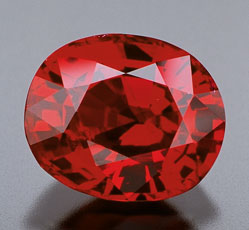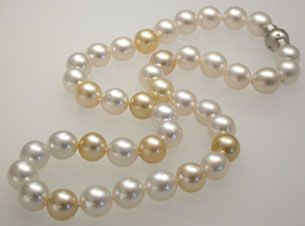
Ten, make that eleven tips to help you choose the perfect pearl
by Richard W. Wise, G.G.
© 2006
1. There are two types of pearl, natural and cultured. In today’s market just about every pearl you see will be cultured meaning that the hand of man had something to do with the creation of the pearl. (pictured above a necklace of mixed South Seas white and golden pearls)
2. We are experiencing a pearl Renaissance. There are more types of pearls on the market today than ever before. Twenty years ago the Japanese Akoya stood virtually alone. Today you can choose from: Freshwater pearls, South Seas white, Tahitian black and South Seas golden pearls.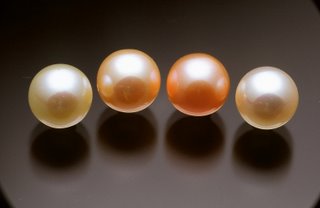
3. What’s the best buy in pearls? Probably the Chinese Freshwater, (pictured left 8.5mm round natural color Chinese f/w pearls) There are two ways to create a cultured pearl, bead nucleation and tissue activation. Pearls that are bead nucleated have a large bead made from shell and thin covering of nacre depending upon how long they are left in the mollusk. Chinese freshwater pearls are tissue activated, have no bead and are pure pearl. They are available in natural pastel or white and in their finest qualities have some of the characteristics of natural pearls. Be careful, over 90% of Chinese freshwater pearls are of marginal quality. The best will stand toe to toe with any pearl in the world and can be purchased for a third of the price. To help you in selection, pay careful attention to the following guidelines:
4. Pearls are often treated, usually to change or improve the color. Pearls are routinely dyed and irradiated. Natural colors are, by far, the most beautiful. Japanese Akoya, the pearl that is seen most in the market is routinely bleached white then dyed to give it a pinkish overtone. If the color looks too good to be true it probably isn’t.
5. A fine pearl has what experts call “life”. This is a combination of high surface luster and overtone and occasionally orient. All pearls exhibit luster, those with thick nacre will usually show excellent luster. Observe the pearl(s) on a white background under a light bulb, if you can distinctly see the outline of the bulb the pearl has high luster.
6. Some pearls exhibit an ephemeral misty glow that seems to hover over the surface of the pearl. This is called overtone. Not all pearls exhibit overtone, for example, it is very rare in South Sea white pearls. If present in white pearls, the overtone is usually pink, in Tahitian black pearls, green, red or blue or some combination (pictured right). Orient is rare in round and semi-round cultured pearls. Orient may be defined as a rainbow affect that changes as the pearl is rotated in the light. Orient is chromatic, meaning it will show all the colors of the spectrum whereas overtone is normally monochromatic exhibiting one color such as pink. A ball bearing can have wonderful luster but the
Not all pearls exhibit overtone, for example, it is very rare in South Sea white pearls. If present in white pearls, the overtone is usually pink, in Tahitian black pearls, green, red or blue or some combination (pictured right). Orient is rare in round and semi-round cultured pearls. Orient may be defined as a rainbow affect that changes as the pearl is rotated in the light. Orient is chromatic, meaning it will show all the colors of the spectrum whereas overtone is normally monochromatic exhibiting one color such as pink. A ball bearing can have wonderful luster but the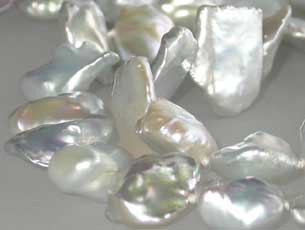 addition of overtone or orient adds dimensionality and life to the pearl (pictured right: orient in Chinese f/w baroque pearls. Below (right) distinct orient in a pearl shell).
addition of overtone or orient adds dimensionality and life to the pearl (pictured right: orient in Chinese f/w baroque pearls. Below (right) distinct orient in a pearl shell).
7. To judge if all the pearls in a strand are round, hold the strand taught between your hands and rotate the strand between your fingers. In a round strand you should see no movement but if some of the pearls jump about like the cams on a cam shaft , the strand is not completely round.
, the strand is not completely round.
8. Odd shaped pearls, called baroques, are not to be disparaged. If they have good luster, no scratches or cracks they have a younger hipper look than the more expensive rounds. You can wear them with jeans and they are available at a substantially lower price.
9. Pearls have flaws just like other gem. These may be dimples, scratches or cracks. A dimple here or there should not be of much concern however, one that looks like it has a bad case of chicken pox should be highly discounted. A pearl with a deep scratch or crack is unacceptable.
10. Beware lower priced Japanese Akoya pearl, if your grandmother has a strand of white round pearls they are likely Akoya. These are formed by placing a shell bead in the oyster. In the last few years, Japanese farmers have dramatically reduced the time the pearl is allowed to develop in the shell resulting in pearls that are little more than nacre plated beads with less than ¼ millimeter of pearl essence or nacre over the shell bead. These pearls are often bleached then dyed pink to simulate overtone. These pearls lack luster and are prone to flaking.
11. Pearls come in many nuances of color but color is not the issue. It doesn’t matter how good the pearls look in the jeweler’s case, the real question is how the pearl looks against your (the wearers) skin. Pearls come alive when placed against skin of an appropriate color and texture. This is a characteristic I dubbed simpatico in my book: Secrets Of The Gem Trade, The Connoisseur’s Guide To Precious Gemstones. Don’t prejudge, test the simpatico of each strand by placing it against the skin on the inside of the wrist. The skin in this area is the same color and texture as the skin around the ears and neck. The result may surprise you.
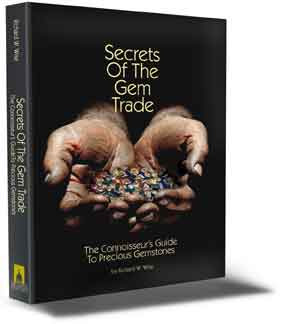
Need more information on pearls?
Follow me on gem buying adventures in the pearl farms of Tahiti. Visit the gem fields of Australia and Brazil. 120 carefully selected photographs showing examples of the highest quality gems to educate the eye, including the Rockefeller Sapphire and many more of the world’s most famous gems. Consider my book: Secrets Of The Gem Trade, The Connoisseur’s Guide To Precious Gemstones.
educate the eye, including the Rockefeller Sapphire and many more of the world’s most famous gems. Consider my book: Secrets Of The Gem Trade, The Connoisseur’s Guide To Precious Gemstones.
“Wise is a renowned author… He’s
done a marvelous job of this first book, monumental work, a tour de force…My recommendation: Buy this book”.
Charles Lewton-Brain, Orchid
whether you like to know what the best colour is in Tanzanite, or how to grade a Diamond, you will find it in this book. No other book I read before dealt with this topic is such detail as Richard Wise’s masterpiece.”
A. Van Acker, FGA
Amazon June 2005
“Secrets Of The Gem Trade: The Connoisseurs Guide To Precious Gemstones by Richard W. Wise is an impressive new reference for dedicated dealers and collectors of gems, gemstones, and … pearls. Introducing and descriptively exploring each and every gem covered in the easy-to-use reference, Secrets Of The Gem Trade contains an illustrated summary of each stone inclusive of its history and general information, hue and tone, saturation, which may be noticed as the finest, an understanding of the particular gems rarity, and the caution for synthetics and how to depict them, however depending upon the stone there may be description of clarity, color fading, multi-color effect, etc. Secrets Of The Gem Trade is very highly recommended to anyone interested in gemology as a superbly organized, authoritative, comprehensive, and easy-to-follow reference.”
Midwest Book Review
April 2006
Only $37.95. Read a couple of chapters online: www.secretsofthegemtrade.com.
Buy it on Amazon: www.amazon.com
Labels: Al Gilbertson book, american cut, Gemological Institute of America, GIA diamond certificates, grading, ideal cut, The First 100 years, tolkowsky cut
posted by Richard W. Wise @ 12:16 PM
 replace that stone for the price the client paid. In these sorts of cases both should be included in the appraisal and then it is up to the client, in consultation with the insurance company to decide what level of risk he or she is willing to assume.
replace that stone for the price the client paid. In these sorts of cases both should be included in the appraisal and then it is up to the client, in consultation with the insurance company to decide what level of risk he or she is willing to assume.
